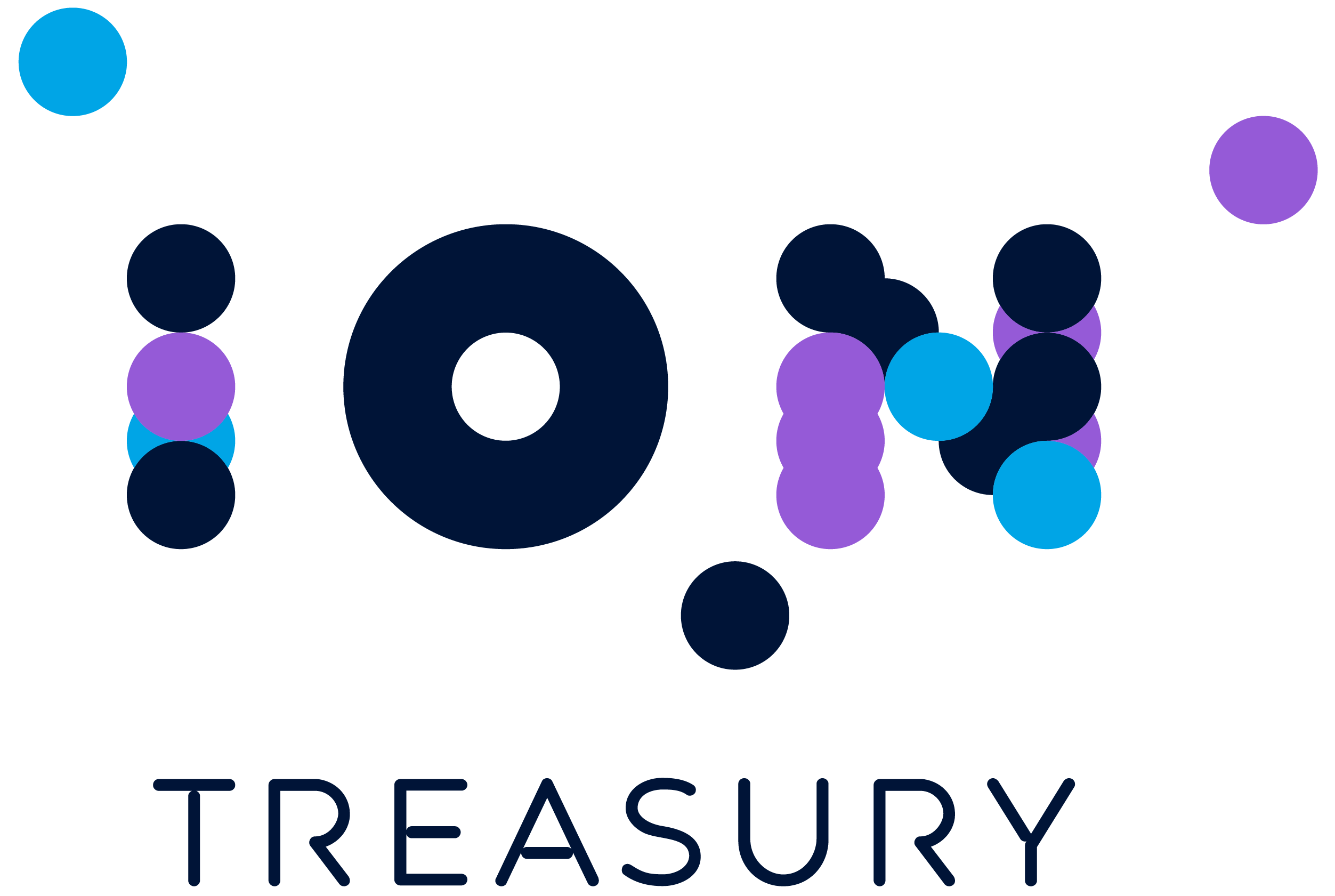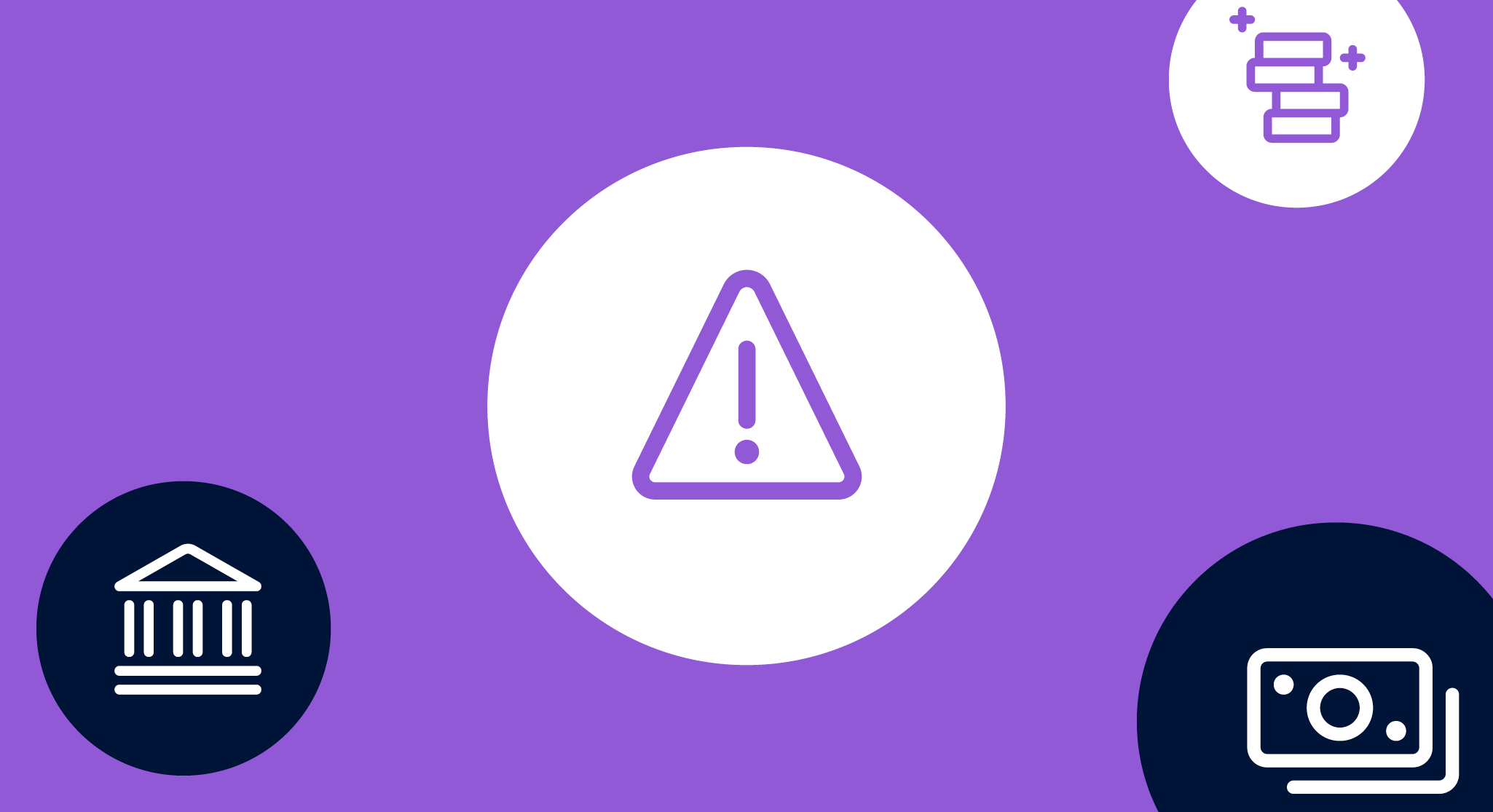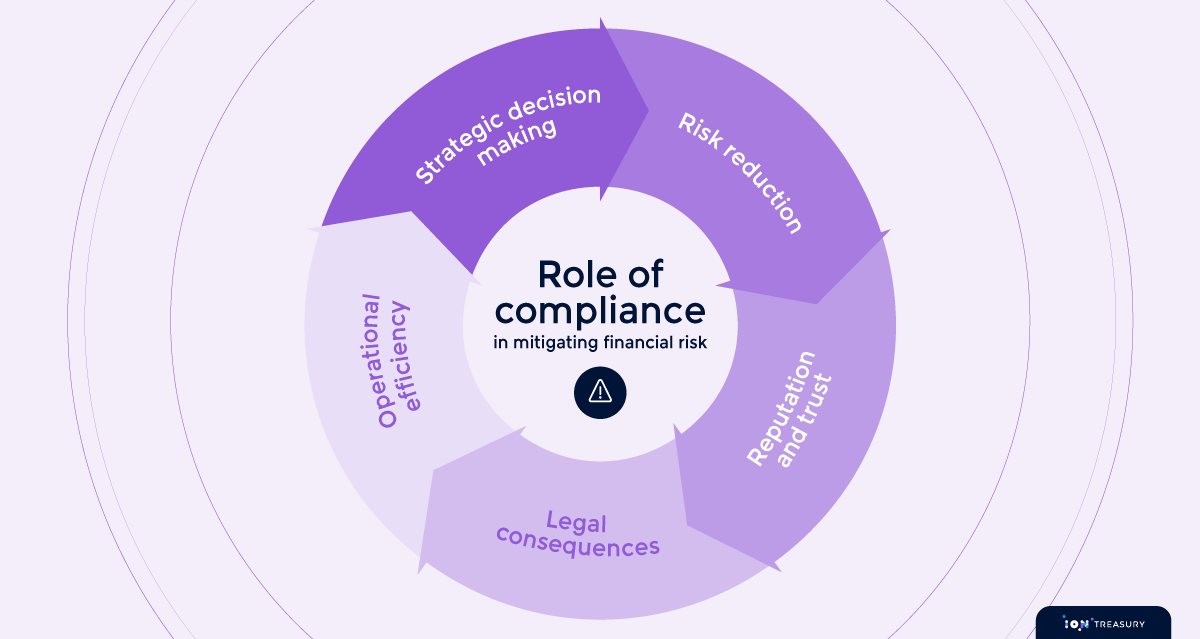Mastering treasury risk management: strategies and solutions
When disruptions threaten the status quo, treasury management becomes an existential concern for founders and entrepreneurs focused on a business strategy and revenue. As Alton McDowell, Co-Head of the Technology and Disruptive Commerce Group at J.P. Morgan, points out, “People don’t care about treasury management until it becomes a problem.” During times of crisis, unforeseen risks can come to the surface, exposing previously hidden vulnerabilities.
These risks can range from disturbances in the banking sector and cyber attacks to worldwide pandemics that threaten public health and safety. The impact of such risks can be significant and far-reaching, making it crucial to remain vigilant and prepared to address them. These events underscore the importance of working with experts who can mitigate risks, regardless of your company’s stage.
This guide delves into the critical risks of treasury management and offers mitigation strategies to lessen those risks, tailored for businesses at every step, from startups to mature corporations.
Types of treasury management risks and how to mitigate them
Market risk
Market risk is exposure to fluctuations in financial markets, such as interest rates, currency exchange rates, commodity prices, and stock market movements. This risk can impact the value of investments and overall financial performance.
Market risk mitigation strategies:
- Use hedging techniques to manage exposure to market fluctuations.
- Diversify investments to reduce risk concentration.
- Continuously monitor market conditions and adjust strategies accordingly.
- Implement Value at Risk (VaR) models to quantify and manage the potential loss in portfolio value within a given confidence level.
- Employ Cash Flow at Risk (CFaR) models to assess and manage the impact of market fluctuations on cash flow projections.
Credit risk
Credit risk arises from the possibility of a counterparty failing to fulfill financial obligations, particularly in credit transactions.
Credit risk mitigation strategies:
- Conduct thorough credit assessments before engaging in transactions.
- Diversify credit exposure to multiple counterparties.
- Establish contingency plans and reserves for potential defaults.
Liquidity risk
Liquidity risk pertains to the ability to meet short-term financial obligations, impacting cash flow and daily operations.
Liquidity risk mitigation strategies:
- Maintain a diversified cash reserve for immediate liquidity needs.
- Continuously monitor cash flows and forecast cash requirements.
- Explore financing options to secure additional liquidity during emergencies.
Operational risk
Operational risk arises from internal processes, system failures, and unforeseen events like errors, fraud, or natural disasters.
Operational risk mitigation strategies:
- Automate treasury management processes to reduce human error.
- Develop disaster recovery (DR) and contingency plans.
- Implement strong internal controls and conduct regular audits.
Regulatory risk
Regulatory risk involves legal and compliance issues resulting from changes in financial regulations or non-compliance.
Regulatory risk mitigation strategies:
- Stay updated on financial regulations and ensure compliance.
- Establish robust record-keeping and documentation practices.
- Collaborate with legal experts to navigate regulatory complexities.
Technology risk
Technology risk encompasses cyberattacks, data integrity, and reliance on multiple platforms.
Technology risk mitigation strategies:
- Automate interfaces between systems to reduce manual data entry.
- Vet third-party platforms for data security.
- Implement data reconciliation strategies for consistency.
Third-party risk
Third-party risk pertains to outsourcing and the risk of concentration with a single vendor or service provider.
Third-party risk mitigation strategies:
- Screen potential partners and vendors rigorously.
- Measure exposure and develop standardized processes.
- Monitor and regularly evaluate third-party relationships.
People risk
People risk occurs due to a lack of redundancy in cash management roles and responsibilities.
People risk mitigation strategies:
- Ensure at least three individuals can manage cash operations.
- Create a formal contingency plan outlining roles and responsibilities.
- Maintain contact information for bank and vendor representatives for crisis communication.
By adopting these mitigation strategies tailored to each risk type, businesses can strengthen their treasury risk management, enhance resilience, and secure financial stability. In our technologically driven world, technology facilitates these strategies and paves the way for innovative approaches to tackling treasury risks. Let’s delve deeper into the role of technology in the next section.
Technology and treasury risk management
The current business landscape is undergoing a significant transformation with the advent of digital technology. Integrating innovative software, advanced tools, and data analytics has enabled companies to navigate the complex financial risk landscape more precisely and efficiently.
Technology enables organizations to:
- Automate processes: Automation reduces manual errors and speeds up treasury operations, ensuring greater accuracy and efficiency. Routine tasks such as data entry, reconciliation, and payments can be streamlined, allowing treasury professionals to focus on strategic decision-making.
- Enhance controls: Technology solutions come equipped with robust controls and security features. These measures help organizations mitigate risks associated with unauthorized access, fraud, and internal errors.
- Centralize operations: Technology platforms provide a centralized hub for treasury activities. This simplifies cash management, enhances visibility, and allows for better control over financial assets across the organization.
- Improve working capital: Efficient use of technology can optimize working capital by providing real-time insights into cash flow, helping organizations make informed decisions on investments and cash reserves.
Software and tools
Numerous software applications and tools are designed to aid in treasury risk management. Some of these include:
- Treasury Management Systems (TMS): TMS software streamlines treasury processes, from cash management to risk assessment. It provides real-time data, automates workflows, and integrates with various financial systems.
- Risk management software: Specialized risk management tools help organizations identify, assess, and mitigate different forms of treasury risk. They provide a structured approach to managing market, credit, and liquidity risks.
- Payment and banking solutions: Secure payment platforms and banking software facilitate secure funds transfer and enable efficient vendor and customer management.
- Blockchain technology: Blockchain can provide transparency and security in financial transactions, reducing fraud risk.
Data analytics
Data analytics is crucial for treasury risk management, turning large amounts of data into actionable insights. Here’s how it helps identify and manage risks:
- Risk assessment: Advanced analytics models can assess market, credit, and liquidity risks by analyzing historical data, market trends, and financial metrics.
- Predictive analysis: Predictive analytics can forecast potential risks and their impact, allowing organizations to adjust their strategies proactively.
- Real-time monitoring: Real-time data analytics provide constant surveillance of financial operations, flagging anomalies and irregularities for immediate attention.
- Scenario planning: Data analytics enables organizations to model various risk scenarios and their potential outcomes, helping in decision-making and contingency planning.
Incorporating technology, software, and data analytics into treasury risk management streamlines operations and enhances the precision and efficacy of risk mitigation strategies. As organizations face constantly evolving financial challenges, the collaboration between technology and treasury risk management remains critical to achieving economic resilience and success.
Furthermore, regulatory compliance, a pivotal facet of effective risk management, is a guiding beacon in the complex sea of financial operations, shaping the course for businesses while offering directives and safeguards. In this section, we’ll explore the vital role of regulatory compliance and how it complements the technological advancements in treasury risk management.
Regulatory compliance
A regulatory framework is a critical component that sets the boundaries and expectations for organizations’ financial operations. Regulatory compliance forms the bedrock upon which effective risk management strategies are built, offering guidance and consequences for businesses in treasury management.
The Regulatory framework
The treasury risk management regulatory framework varies from jurisdiction to jurisdiction, often encompassing a combination of national and international regulations. At its core, this framework aims to:
- Ensure fair practices: Regulations promote fairness and integrity in financial markets, safeguarding the interests of investors, customers, and the general public. They establish rules to prevent unethical or fraudulent behavior.
- Manage systemic risk: Regulatory bodies seek to prevent and manage systemic risk in the financial system. They aim to maintain stability, minimize disruptions, and ensure the sustainability of financial institutions.
- Enhance transparency: Transparency is a crucial element in regulatory compliance. It mandates that organizations disclose critical information about their financial activities, ensuring stakeholders can access accurate and timely data.
- Protect consumer interests: Regulations often strongly focus on protecting consumer interests by ensuring the safety and security of their investments and transactions.
Compliance mitigates risks
Compliance with financial regulations is not just about meeting legal requirements; it plays a vital role in mitigating risks and protecting the organization. Here’s how:
- Risk reduction: Regulations are often designed to identify, assess, and mitigate various forms of risk, including market, credit, and operational risk. By adhering to these regulations, organizations must implement risk management practices that safeguard their financial stability.
- Reputation and trust: Compliance with regulations builds trust with stakeholders, including investors, customers, and partners. A solid reputation as a law-abiding entity can insulate organizations from reputational risk, which can be just as damaging as financial risk.
- Legal consequences: Non-compliance with financial regulations can result in legal consequences, including fines, penalties, or criminal charges. By adhering to regulations, organizations avoid the significant financial and legal risks associated with violations.
- Operational efficiency: Many regulatory requirements prompt organizations to streamline operations and adopt best practices. This, in turn, enhances operational efficiency, reducing the potential for operational risk.
- Strategic decision making: Compliance fosters a culture of responsibility and diligence within organizations. This empowers them to make strategic decisions aligned with regulatory expectations, which can lead to a competitive advantage.
Organizations that embrace regulatory compliance and integrate it into their risk management strategies are better positioned to withstand unforeseen challenges and thrive in a competitive marketplace. By adhering to the regulatory framework, businesses can navigate treasury risk more effectively and build trust and accountability in their financial operations.
In the world of treasury management, one thing is abundantly clear – no universal solution fits all. Regardless of its size and complexity, every organization grapples with distinct operational challenges, regulatory requirements, and risk factors. That’s where innovation steps in, offering diverse tools and strategies to navigate the intricate landscape of treasury risk management.
ION Treasury is a prime exemplar of this innovation. With a versatile portfolio featuring distinct treasury and risk management solutions, ION Treasury empowers organizations to manage liquidity efficiently at any scale across borders while mitigating financial, regulatory, and operational risks.
Whether you’re just beginning your digital journey or seeking to refine and optimize your existing treasury management practices, ION Treasury has a tailored solution that aligns with your needs. As financial landscapes continue to evolve, organizations must remain agile and resilient, and with ION Treasury by your side, you’re equipped to face the challenges of treasury risk management with confidence.
KEY TAKEAWAYS
- Treasury management often becomes a critical concern during disruptions, emphasizing the need for founders and entrepreneurs to prioritize it within their business strategies to address unforeseen risks effectively.
- From market and credit risks to operational and regulatory risks, implementing diverse mitigation strategies such as hedging techniques, credit assessments, and contingency planning tailored to each risk type is essential for bolstering treasury risk management.
- Integrating technology automates processes, enhances controls, and centralizes operations. It also empowers organizations to navigate the complex financial risk landscape improving working capital management, and decision-making processes.

Contact our team of experts today
Get personalized guidance and explore how ION Treasury can transform your treasury management practices.



